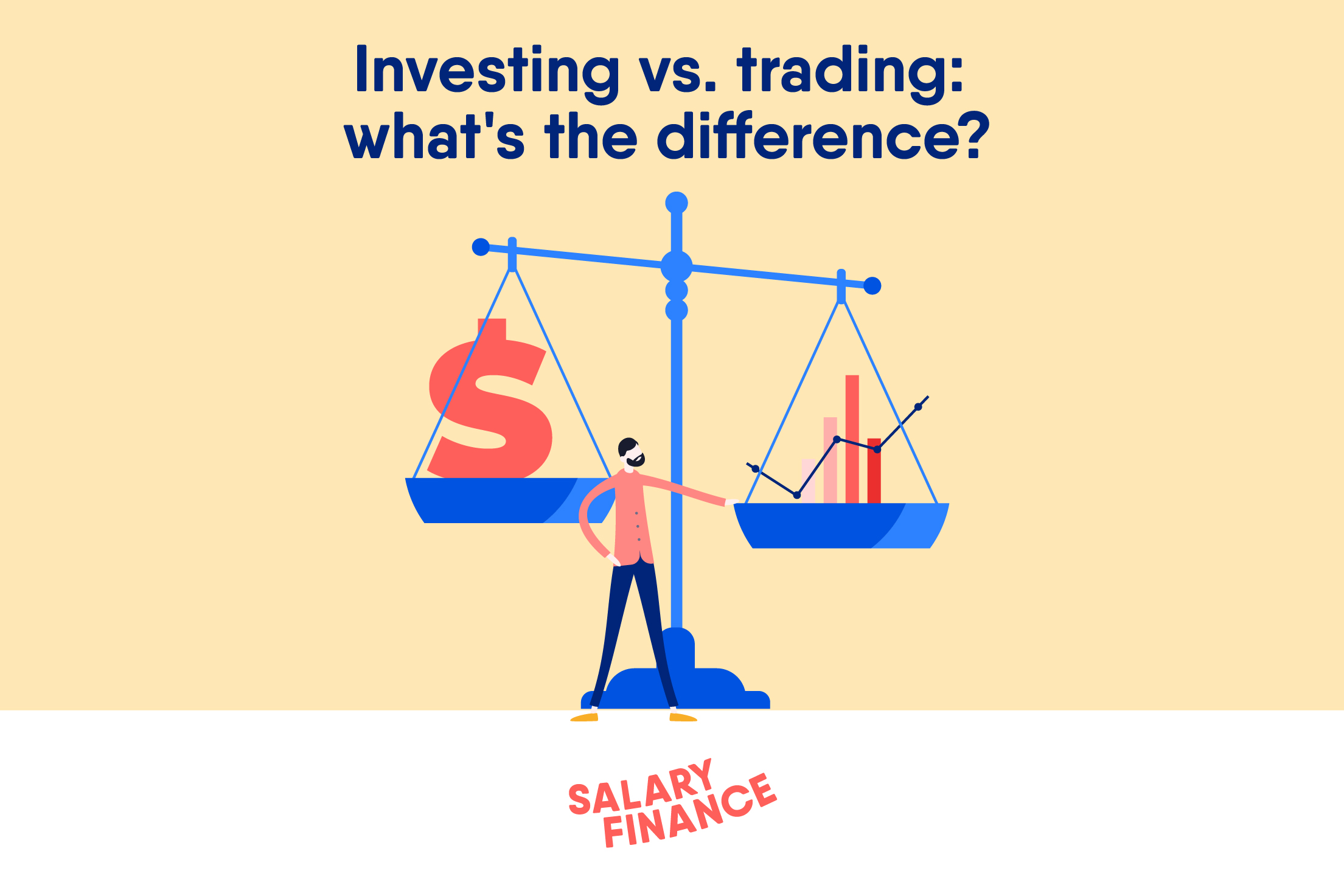
Investing and trading are two very different methods of attempting to profit in the financial markets. Both investors and traders seek profits through market participation. In general, investors seek larger returns over an extended period through buying and holding. Traders, by contrast, take advantage of both rising and falling markets to enter and exit positions over a shorter timeframe, taking smaller, more frequent profits.
KEY TAKEAWAYS
- Investing takes a long-term approach to the markets and often applies to such purposes as retirement accounts.
- Trading involves short-term strategies to maximize returns daily, monthly, or quarterly.
- Investors are more likely to ride out short-term losses, while traders will attempt to make transactions that can help them profit quickly from fluctuating markets.
Investing
The goal of investing is to gradually build wealth over an extended period of time through the buying and holding of a portfolio of stocks, baskets of stocks, mutual funds, bonds, and other investment instruments.
Important:
Investors often enhance their profits through compounding or reinvesting any profits and dividends into additional shares of stock.
Investments often are held for a period of years, or even decades, taking advantage of perks like interest, dividends, and stock splits along the way. While markets inevitably fluctuate, investors will "ride out" the downtrends with the expectation that prices will rebound and any losses eventually will be recovered. Investors typically are more concerned with market fundamentals, such as price-to-earnings ratios and management forecasts.
Anyone who has a 401(k) or an IRA is investing, even if they are not tracking the performance of their holdings on a daily basis. Since the goal is to grow a retirement account over the course of decades, the day-to-day fluctuations of different mutual funds are less important than consistent growth over an extended period.
Trading
Trading involves more frequent transactions, such as the buying and selling of stocks, commodities, currency pairs, or other instruments. The goal is to generate returns that outperform buy-and-hold investing. While investors may be content with annual returns of 10% to 15%, traders might seek a 10% return each month. Trading profits are generated by buying at a lower price and selling at a higher price within a relatively short period of time. The reverse also is true: trading profits can be made by selling at a higher price and buying to cover at a lower price (known as "selling short") to profit in falling markets.
While buy-and-hold investors wait out less profitable positions, traders seek to make profits within a specified period of time and often use a protective stop-loss order to automatically close out losing positions at a predetermined price level. Traders often employ technical analysis tools, such as moving averages and stochastic oscillators, to find high-probability trading setups.
A trader's style refers to the timeframe or holding period in which stocks, commodities, or other trading instruments are bought and sold. Traders generally fall into one of four categories:
- Position Trader: Positions are held from months to years.
- Swing Trader: Positions are held from days to weeks.
- Day Trader: Positions are held throughout the day only with no overnight positions.
- Scalp Trader: Positions are held for seconds to minutes with no overnight positions.
Traders often choose their trading style based on factors including account size, amount of time that can be dedicated to trading, level of trading experience, personality, and risk tolerance.
ADVISOR INSIGHT
- Josh Brein, Brein Wealth Management, LLC, Bellevue, WA
"While one could consider their trading activities as investing, for me, the difference between trading and investing has more to do with time.
When you invest in something, you are looking to grow your money. Some people invest for a long time, such as for retirement, while others invest for a short time to hit a specific goal, such as buying a car. A person who owns an annuity, for instance, is investing for a longer time horizon than someone who enjoys trading stocks and moves their money around quite frequently.
Trading, on the other hand, suggests the investor is taking a very short-term approach and is principally concerned with either making quick cash or the thrill of participating in the markets."






